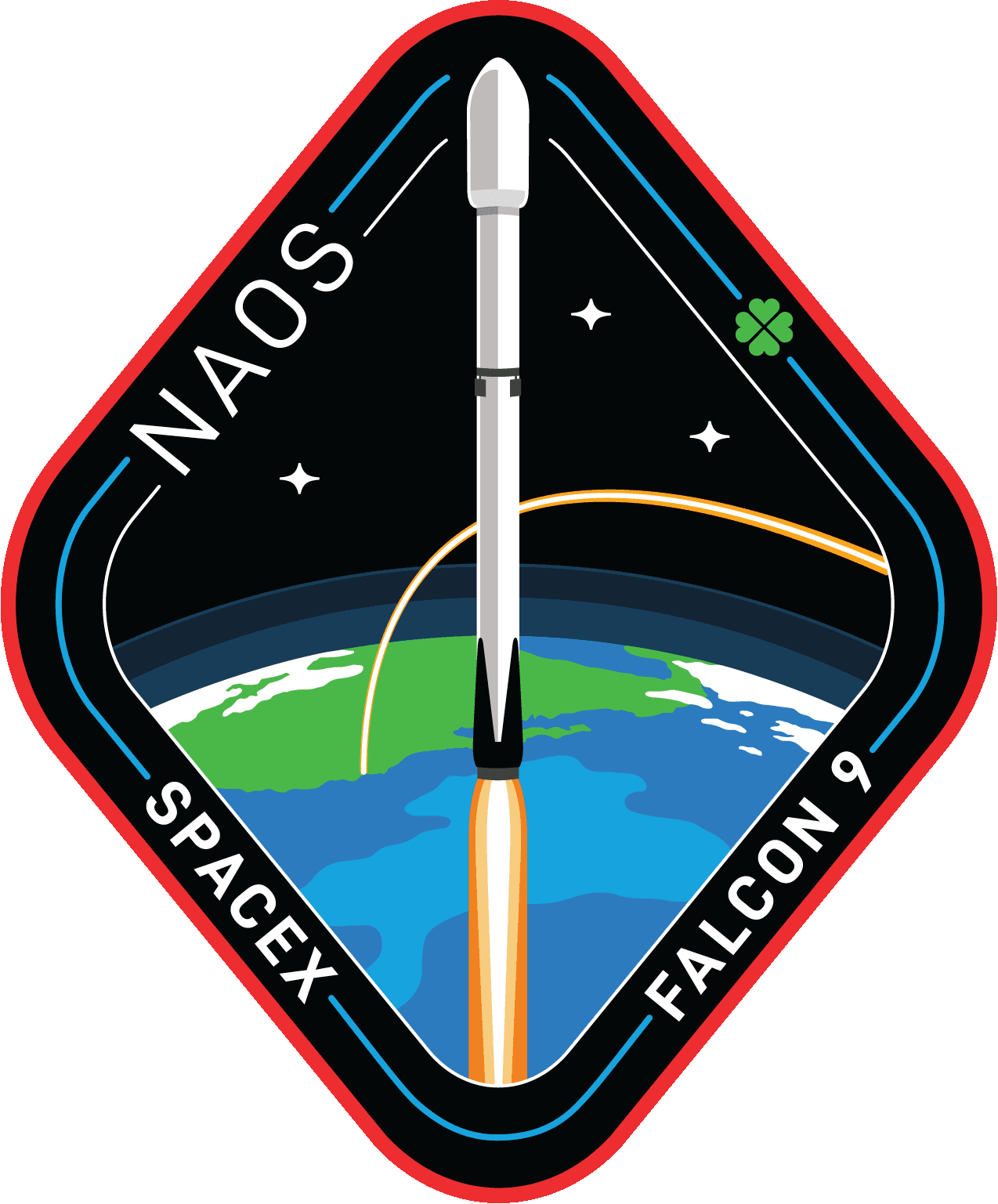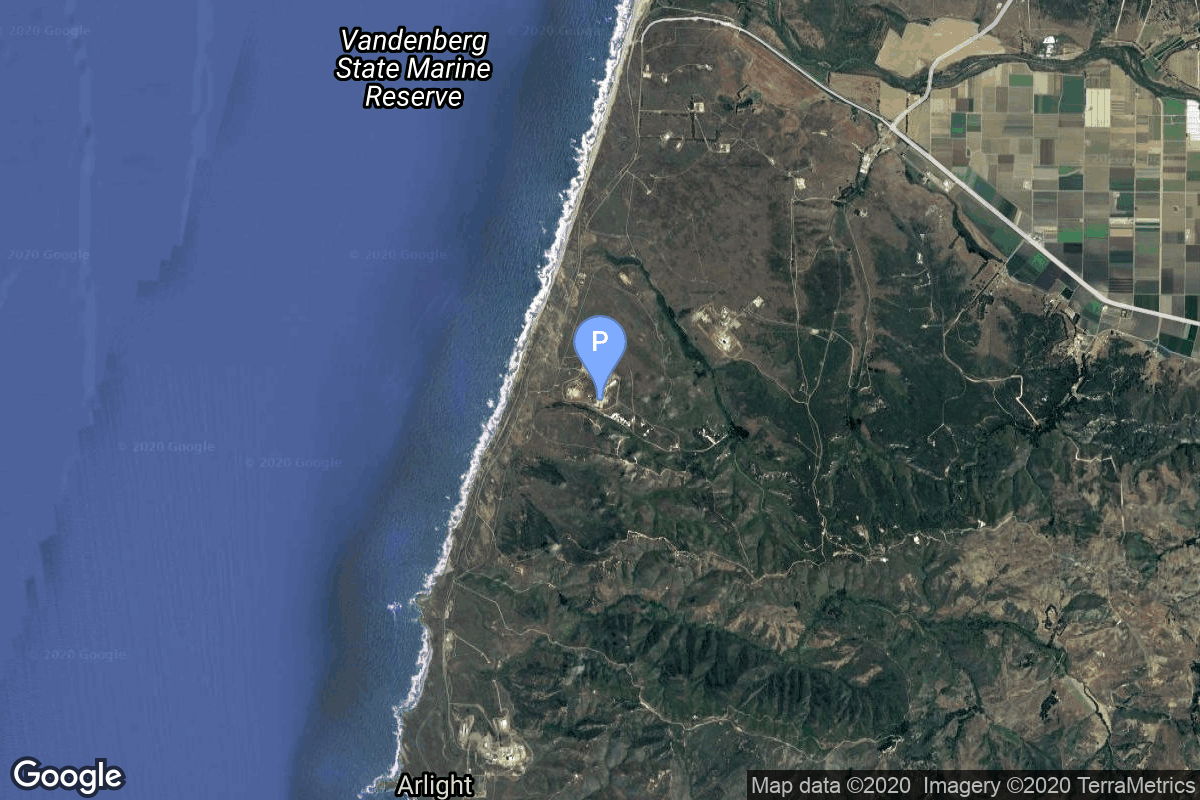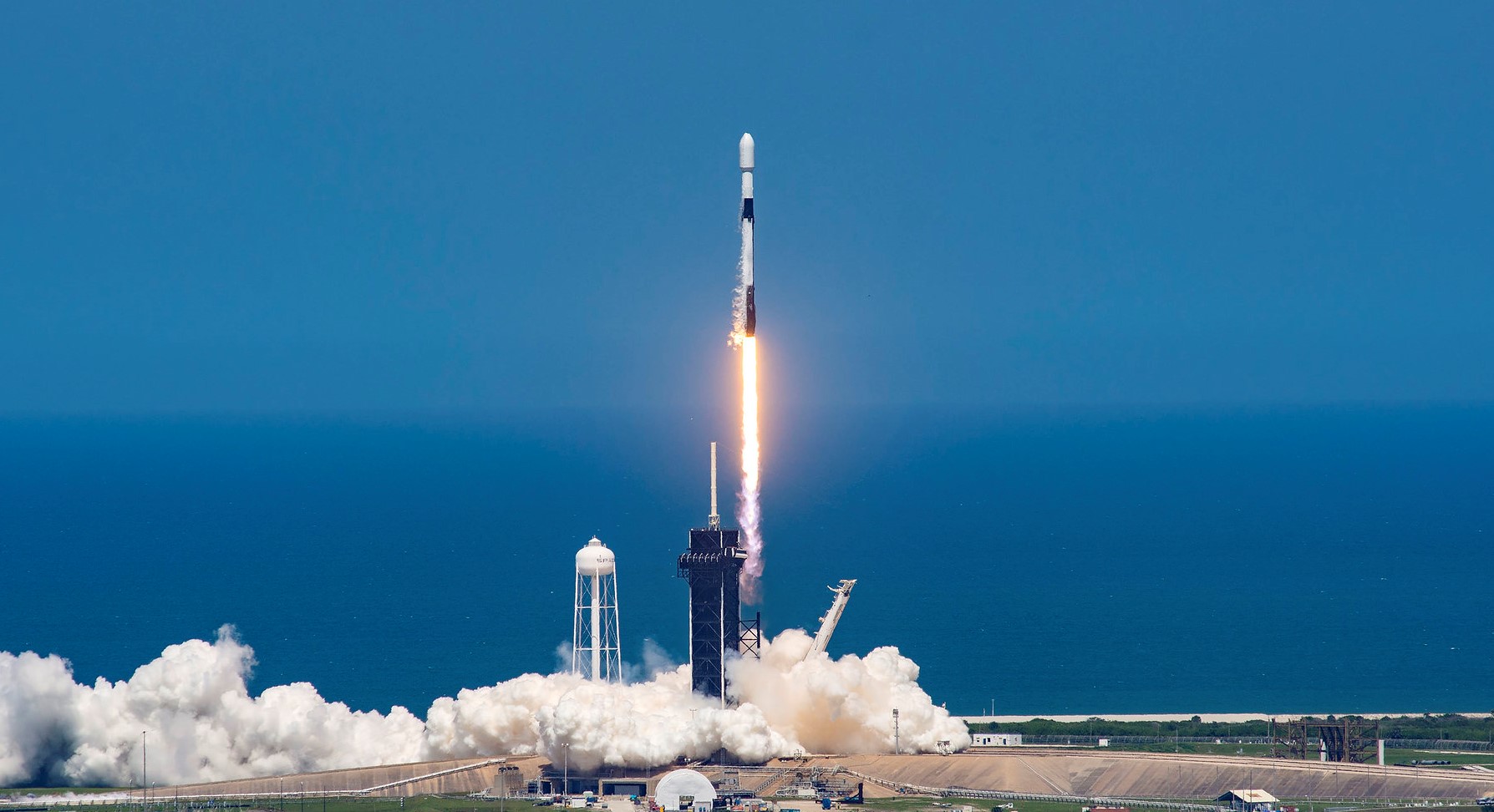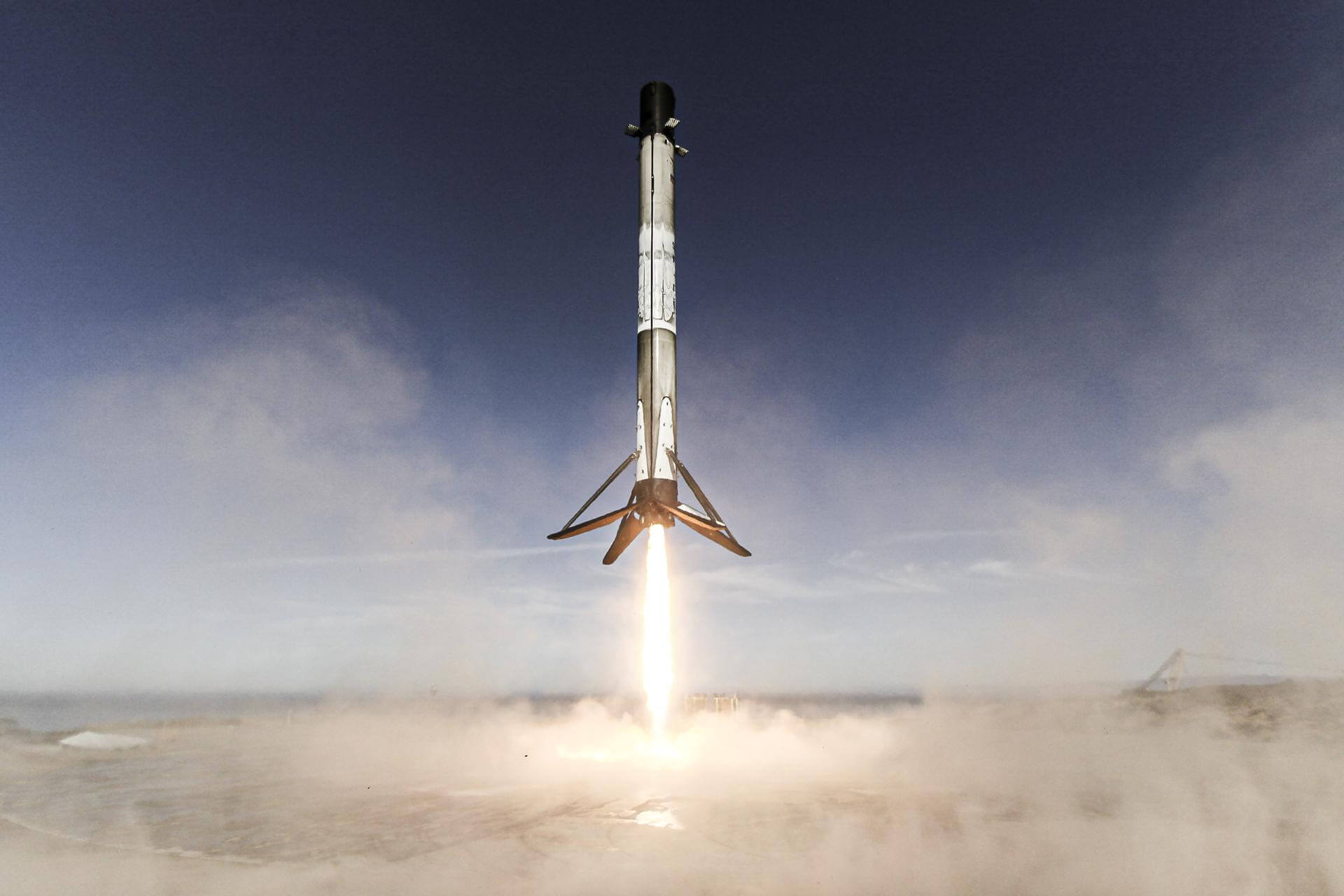NAOS
Falcon 9 Block 5
SpaceX
Rocket Launch Live Video Stream
We’re thrilled to announce the launch of our brand new Rocket Launch Live Video Stream! This is a completely new endeavor for us, and we’re officially designating it as a beta program. While we’ve worked hard to deliver a seamless viewing experience, please be aware that you might encounter some minor glitches or unexpected behavior as we fine-tune everything. Your participation is incredibly valuable as we refine this new feature, so please join us to watch the launch together and help us make this stream the best it can be!
Rocket Launch Videos
Weather Forecast During Launch
The forecast calls for a temperature of 63°F, overcast clouds, 87% cloud cover and a wind speed of 8mph.
Trajectory
View comprehensive details including the rocket's trajectory, velocity, altitude, thrust, and more at FlightClub.io.
Rocket Launch Timeline
Enhance your rocket launch experience with a detailed timeline! From pre-launch preparations to post-launch milestones, a well-structured schedule ensures every step—payload prep, safety checks, and liftoff—runs smoothly. Stay informed and follow the action with precision.
| T- 00 : 38 : 00 | GO for Prop Load Launch director verifies go for propellant load |
| T- 00 : 35 : 00 | Prop Load Start of propelland loading |
| T- 00 : 35 : 00 | Stage 1 LOX Load Start of liquid oxygen loading in the first stage |
| T- 00 : 16 : 00 | Stage 2 LOX Load Start of liquid oxygen loading in the second stage |
| T- 00 : 07 : 00 | Engine Chill Start of engine chilling |
| T- 00 : 01 : 00 | Tank Press Fuel tanks are pressurized to flight levels |
| T- 00 : 01 : 00 | Startup The onboard computer takes control over the countdown and runs last checks |
| T- 00 : 00 : 45 | GO for Launch Launch director verifies go for launch |
| T- 00 : 00 : 03 | Ignition Start of the engine ignition sequence |
| T+ 00 : 00 : 00 | Liftoff First upwards movement of the rocket |
| T+ 00 : 01 : 12 | Max-Q Maximum dynamic pressure |
| T+ 00 : 02 : 14 | MECO Cut-off of the main engine |
| T+ 00 : 02 : 18 | Stage 2 Separation Separation of the second stage from the first |
| T+ 00 : 02 : 22 | Stage 1 Flip Flip maneuver of the first stage |
| T+ 00 : 02 : 25 | SES-1 First start of the second engine |
| T+ 00 : 02 : 31 | Booster Boostback Burn Startup Start of the booster boostback burn |
| T+ 00 : 02 : 41 | Fairing Separation Separation of the payload fairing |
| T+ 00 : 03 : 18 | Booster Boostback Burn Shutdown End of the booster boostback burn |
| T+ 00 : 06 : 14 | Entry Burn Startup Start of the atmospheric entry burn |
| T+ 00 : 06 : 35 | Entry Burn Shutdown End of the atmospheric entry burn |
| T+ 00 : 07 : 20 | Stage 1 Landing Burn Start of the first stage landing burn |
| T+ 00 : 07 : 57 | Stage 1 Landing Landing of the first stage |
| T+ 00 : 09 : 29 | SECO-1 First cut-off of the second engine |
| T+ 00 : 11 : 42 | Payload Separation Final deployment of the payload from the rocket |
| T+ 00 : 11 : 48 | Payload Separation Final deployment of the payload from the rocket |
| T+ 00 : 11 : 55 | Payload Separation Final deployment of the payload from the rocket |
| T+ 00 : 52 : 34 | SES-2 Second start of the second engine |
| T+ 00 : 52 : 37 | SECO-2 Second cut-off of the second engine |
| T+ 01 : 05 : 55 | SES-3 Third start of the second engine |
| T+ 01 : 05 : 59 | SECO-3 Third cut-off of the second engine |
| T+ 01 : 08 : 50 | Payload Separation Final deployment of the payload from the rocket |
| T+ 01 : 08 : 58 | Payload Separation Final deployment of the payload from the rocket |
| T+ 01 : 09 : 07 | Payload Separation Final deployment of the payload from the rocket |
| T+ 01 : 09 : 16 | Payload Separation Final deployment of the payload from the rocket |
| T+ 01 : 09 : 26 | Payload Separation Final deployment of the payload from the rocket |
Mission
NAOS
- Type: Government/Top Secret
- Orbit: Sun-Synchronous Orbit
- Launch Cost: $52,000,000
NAOS (National Advanced Optical System) is the space component of Luxembourg's governmental dual-use observation satellite system LUXEOSys (Luxembourg Earth Observation System). Its purpose is to provide high resolution images to national and international governmental and military organizations such as NATO.
The 800 kg satellite is built by OHB Italia and is equipped with a very high-resolution optical camera with a ground reolution of 50 cm in an around 450 km high sun-synchronous orbit. It will have a operational life time of 7 years.
Also on board the launch is Dhruva Space's LEAP-1; Planet's Pelican-3 and Pelican-4; and Exolaunch’s Acadia-6, FFLY-1, FFLY-2, and FFLY-3.
Location
Space Launch Complex 4E
Vandenberg SFB, CA, USA
Find the best place to watch the launch from Vandenberg
Space Launch Complex 4E has witnessed the launch of 226 rockets, including 226 orbital launch attempts. While Vandenberg SFB, CA, USA, has been the site for 840 rocket launches.
Vandenberg Space Force Base is a United States Space Force Base in Santa Barbara County, California. Established in 1941, Vandenberg Space Force Base is a space launch base, launching spacecraft from the Western Range, and also performs missile testing. The United States Space Force's Space Launch Delta 30 serves as the host delta for the base, equivalent to an Air Force air base wing. In addition to its military space launch mission, Vandenberg Space Force Base also hosts space launches for civil and commercial space entities, such as NASA and SpaceX.
Rocket
SpaceX Falcon 9 Block 5
Falcon 9 is a two-stage rocket designed and manufactured by SpaceX for the reliable and safe transport of satellites and the Dragon spacecraft into orbit. The Block 5 variant is the fifth major interval aimed at improving upon the ability for rapid reusability.
Landing
Core B1063
The Falcon 9 booster B1063 landed back at the launch site at LZ-4 after its 27th flight. Booster B1063 last launched 09/29/2025 and has seen 28 successful launches and landings. Notable launches include Sentinel-6 and Dart.
A sonic boom is likely to occur a few minutes after launch as the booster returns to the launch site. Be prepared for a loud but thrilling experience! Learn more about rocket launch sonic booms
Landing Zone 4 - LZ-4
LZ at Vandenberg
Return to Launch Site - RTLS
A return to launch site usually means that after stage separation the booster flips and does a burn back towards the launch site, landing near where it initially launched from.
Agency
SpaceX
Space Exploration Technologies Corp., known as SpaceX, is an American aerospace manufacturer and space transport services company headquartered in Hawthorne, California. It was founded in 2002 by entrepreneur Elon Musk with the goal of reducing space transportation costs and enabling the colonization of Mars. SpaceX operates from many pads, on the East Coast of the US they operate from SLC-40 at Cape Canaveral Space Force Station and historic LC-39A at Kennedy Space Center. They also operate from SLC-4E at Vandenberg Space Force Base, California, usually for polar launches. Another launch site is being developed at Boca Chica, Texas.






Jesus Christ almighty two statues fell off of my counter. CUT THAT OUT. WHO NEEDS A. BOMB WHEN YOU LIVE BY THE GD Space”Force!
Why do you live next to a launch pad?